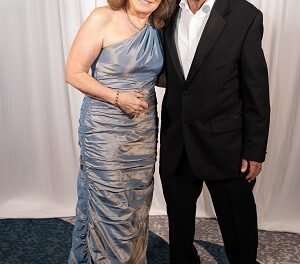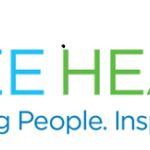 Pitt County Memorial Hospital (PCMH) in Greenville, North Carolina, has initiated a unique approach to meet the effective communication requirements of the Americans with Disabilities Act (ADA) and Section 504 of the 1973 Rehab Act. The hospital now has the capability to provide communication access to deaf patients, who use American Sign Language (ASL) as their primary mode of communication, through video interpreting services. The rationale for exploring the use of this technology has been to provide mandated interpreting services within a reasonable time frame, thereby reducing the risks associated with potential non-regulatory compliance.
Pitt County Memorial Hospital (PCMH) in Greenville, North Carolina, has initiated a unique approach to meet the effective communication requirements of the Americans with Disabilities Act (ADA) and Section 504 of the 1973 Rehab Act. The hospital now has the capability to provide communication access to deaf patients, who use American Sign Language (ASL) as their primary mode of communication, through video interpreting services. The rationale for exploring the use of this technology has been to provide mandated interpreting services within a reasonable time frame, thereby reducing the risks associated with potential non-regulatory compliance.
PCMH serves a large number of deaf patients and has a long-standing reputation for providing quality care for eastern North Carolina residents, including those with disabilities. Because of the hospitals commitment to effective communication, deaf patients sometimes travel considerable distances to receive medical services at PCMH.
Deaf patients and advocacy groups are very knowledgeable these days and tend to be assertive about their legal right to effective communication. A deaf persons right to communicate directly with their health care provider must be upheld and taken seriously from a quality standpoint and as a compliance issue.
Noncompliance can create a very precarious situation from both ethical and legal standpoints, as well as from the monetary penalties and unfavorable PR that can potentially result. In some instances, a noncompliant health care organization could risk jeopardizing accreditation.
In 2005, PCMH began to use mobile video conferencing equipment and services, provided by DT Interpreting, to help facilitate communication between medical professionals and deaf patients. Now the hospital can access 24/7 nationally certified ASL interpreters via its internal Intranet (LAN/WAN) network provided by the Brody School of Medicine.
Interpreters appear on a nearby video screen that can be maintained side-by-side other equipment and is ready for use when needed. The system uses Sony Video Communication technology and IPELA PSC-TL30 video screens. Each mobile unit consists of a camera, microphone, data compression/decompression device and software. Hardware is mounted on a compact mobile cart similar to a standard IV pole.
As a result, PCMH medical professionals have increased their effectiveness for providing medical care by bridging the communication gap between patients and staff, as well as meeting the effective communication requirements of both the ADA and Section 504.
According to the Americans with Disabilities Act, a hospital or physician must provide a means of effective communication for deaf, hard-of-hearing, and speech-impaired patients. This is a critically important mandate because communication barriers could have a major impact upon the care a patient receives, particularly in an emergency situation.
It is good practice to consider a patients preferred method of interpretation. For some deaf people, this would be the use of American Sign Language (ASL) by an agency interpreter. PCMH continues to use the services of agency sign language interpreters in the region. However, since these licensed professionals are not on-site, there have been times when staff members have had to wait several hours for an interpreter to arrive. Communication difficulties can clearly make the diagnosis or treatment of the patients medical need more difficult.
In many instances, PCMH uses video teleconferencing as a “first-response” method to communicate with deaf patients. The hospital may still call upon a contract interpreter, but frequently the patient and staff are comfortable using the teleconferencing system alone through the entire treatment process. Notably, the system outshines traditional practices when communication must be brief when it has to happen “now” –not two hours from now.
Materials written about ADA/504 noncompliance often have to do with the lack of effective communication resources. All public and private entities with more than 15 employees should conduct a programmatic and facilities review to determine their level of accessibility to disabled people. From this review, they should develop a plan to correct any problem areas.
Should it be found that an organization has failed to meet its obligation for effective communication, the flood gates can burst wide open –as it becomes known that other requirements of the ADA/504 may have been neglected. The situation can quickly snowball from the mere fact that the “effective communication” requirement was not addressed.
Hospitals should learn all of the requirements of the ADA and 504 and take affirmative steps to comply even if this should have been done years ago. It is never too late to do the right thing to ensure that “effective communication” requirements are met and quality care remains a top priority.
Post Views: 961
 Pitt County Memorial Hospital (PCMH) in Greenville, North Carolina, has initiated a unique approach to meet the effective communication requirements of the Americans with Disabilities Act (ADA) and Section 504 of the 1973 Rehab Act. The hospital now has the capability to provide communication access to deaf patients, who use American Sign Language (ASL) as their primary mode of communication, through video interpreting services. The rationale for exploring the use of this technology has been to provide mandated interpreting services within a reasonable time frame, thereby reducing the risks associated with potential non-regulatory compliance.
Pitt County Memorial Hospital (PCMH) in Greenville, North Carolina, has initiated a unique approach to meet the effective communication requirements of the Americans with Disabilities Act (ADA) and Section 504 of the 1973 Rehab Act. The hospital now has the capability to provide communication access to deaf patients, who use American Sign Language (ASL) as their primary mode of communication, through video interpreting services. The rationale for exploring the use of this technology has been to provide mandated interpreting services within a reasonable time frame, thereby reducing the risks associated with potential non-regulatory compliance. 
























